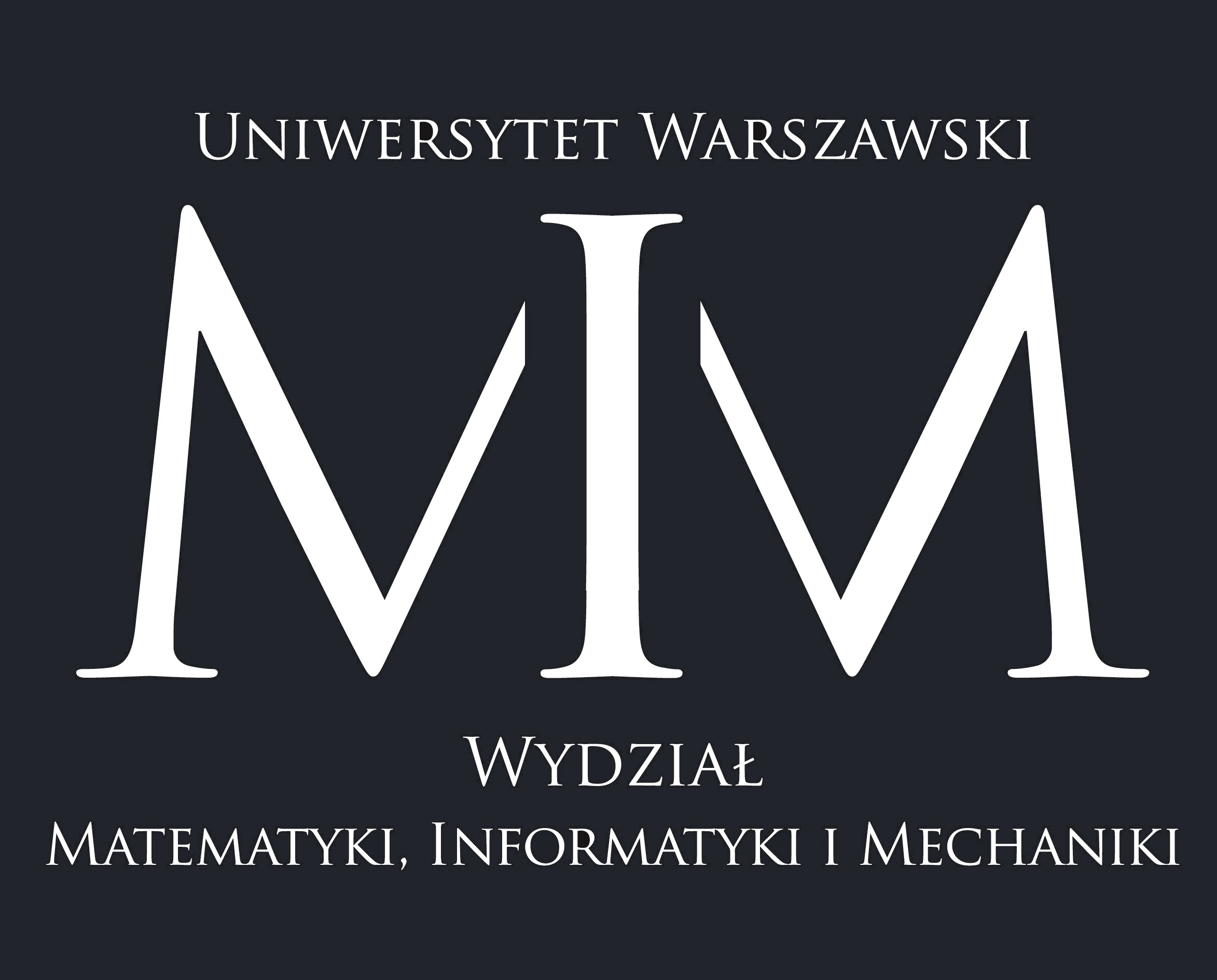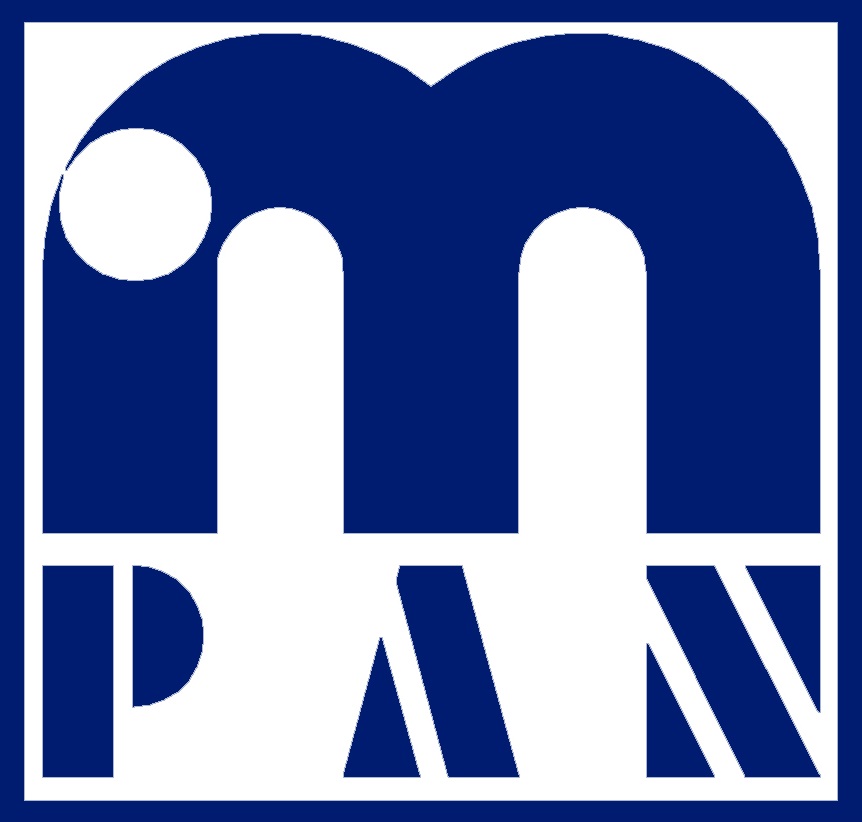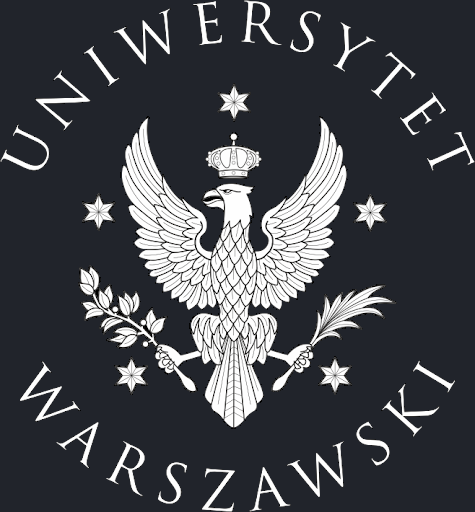22 May: Open Day
of Doctoral Studies
in Mathematics
Doctoral Studies in Mathematics
Do you consider pursuing PhD studies in Mathematics? Come to our (virtual) Open Day of Doctoral Studies in Mathematics held on 22nd May 2021 and see a sample of research topics offered to PhD students.
Doctoral School
In 2019 University of Warsaw opened the Doctoral School of Exact and Natural Sciences. Within it, Faculty of Mathematics, Informatics, and Mechanics of University of Warsaw (MIM UW) and Institute of Mathematics of the Polish Academy of Sciences (IMPAN) run Warsaw Doctoral School of Mathematics and Computer Science (WDSMCS). Both MIMUW and IMPAN are known worldwide for top level research in mathematics and computer science. Over 100 research grants are running in these institutions, including 9 highly competitive ERC (European Research Commission) grants (7 in CS, 2 in math).
Recruitment 2021
In 2021, we offer 22 PhD student positions in mathematics and computer science. Applications are accepted from May 5th until June 28th.
Important Links
More information can be found at the website of:
Schedule
| 22 May: Open Day of Doctoral Studies in Mathematics | ||
| 9:30 – 9:45 | Welcome address, short presentation of the PhD School and the recruitment process | |
| Session 1: Institute of Applied Mathematics and Mechanics | ||
| 9:45 – 10:00 | Presentation of the Institute by prof. Dariusz Wrzosek Presentation | |
| 10:00 – 10:10 | Agnieszka Wiszniewska-Matyszkiel | Mathematical tools to model "the tragedy of the commons" in dynamic context |
| 10:10 – 10:20 | Jacek Miękisz | Mathematical physics and ergodic theory of non-periodic structures |
| 10:20 – 10:30 | Jan Peszek | Perception: a driving factor in multiscale collective dynamics |
| 10:30 – 10:40 | Piotr Rybka | Calculus of variations and measures; convergence of gradient flows |
| 10:40 – 10:50 | Anna Zatorska-Goldstein | TBA |
| 10:50 – 11:00 | Mirosław Lachowicz | Micro, meso and macro |
| 11:00 – 11:10 | Iwona Chlebicka | Measure data problems |
| 11:10 – 11:40 | Break/informal discussion | |
| Session 2: Institute of Mathematics | ||
| 11:40 – 11:55 | Presentation of the Institute by prof. Krzysztof Barański | |
| 11:55 – 12:05 | Jacek Pomykała | Special numbers in algorithmic number theory |
| 12:05 – 12:15 | Tomasz Maszczyk | New homological methods in lattice theory, convex geometry and information theory Quantum coverings of manifolds and low dimensional topology |
| 12:15 – 12:25 | Witold Bednorz | Methods of studying the suprema of stochastic processes |
| 12:25 – 12:35 | Piotr Nayar | Inequalities in convex geometry and information theory |
| 12:35 – 12:45 | Agnieszka Kałamajska | Weighted Sobolev spaces, generalizations and applications |
| 12:45 – 12:55 | Piotr Mormul | Completely nonholonomic geometric distributions |
| 12:55 – 13:05 | Krzysztof Barański and Anna Zdunik | Dynamical systems and ergodic theory |
| 13:05 – 14:30 | Lunch break/informal discussion | |
| Session 3: Institute of Mathematics Polish Academy of Sciences | ||
| 14:30 – 14:45 | Presentation of the Institute by prof. Łukasz Stettner | |
| 14:45 – 14:55 | Janusz Grabowski | Graded manifolds in geometry and physics |
| 14:55 – 15:05 | Zbigniew Jelonek | On the set of fixed points of a polynomial automorphisms |
| 15:05 – 15:15 | Masha Vlasenko | Simple things we don't know: reflections on doing research in number theory |
| 15:15 – 15:25 | Tomasz Cieślak | Uniqueness and regularity of solutions to PDEs and some real world problems |
| 15:25 – 15:35 | Aneta Wróblewska-Kamińska | Mathematical analysis of hydrodynamical models |
| 15:35 – 15:45 | Yonatan Gutman | Representations of dynamical systems |
| 15:45 – 16:00 | Break/informal discussion | |
| 16:00 – 16:10 | Damian Osajda | Combinatorial non-positive curvature in group theory |
| 16:10 – 16:20 | Piotr Nowak | Geometry of Groups and Applications |
| 16:20 – 16:30 | Tomasz Klimsiak | A probabilistic approach to PDEs |
| 16:30 – 16:40 | Piotr M. Hajac | Operator Algebras that one can see - a foretaste of Noncommutative Topology |
| 16:40 – 16:50 | Tomasz Adamowicz | Boundary behaviour of harmonic functions and mappings and their generalizations |
| 16:50 – 17:00 | Wojciech Kryński | Conformal geometry and differential equations |
| 17:00 – 17:30 | Informal discussion | |
Abstracts
My fields of interest are large games (i.e. games with a continuum of players), dynamic games and optimal control theory, I'm also interested in applications of this kind of tools to economics and ecology. I can superwise PhD theses related to all those aspects of my scientific interests, both applicational and theoretical. Dynamic games are mathematical tools to model behaviour of at least two interrelated decision makers, called players, each of them aiming their own objective in an environment changing dynamically in response to their decisions, while the optimization of each player is influenced by the decisions of the rest: like in e.g. an open access marine fishery extraction problem, a commuting problem or in a pursuit-evasion problem.
- "The tragedy of the commons" in dynamic context. The term "the tragedy of the commons" describes a situation in which many individuals use common resources, each of them pursuing their own objective, and this rationality leads to inefficiency in use of the resource. Mathematically, it is a class of games, in the ecological context, dynamic games, including differential games. "The tragedy of the commons" encompasses a variety of problems, e.g. overexploitation of fisheries, air and water pollution, spread of epidemics in presence of individual means decreasing spreading the virus, greenhouse effect or space debris.
- Differential and multistage games: theoretical works on linear quadratic and linear logarithmic problems with constraints, with possible extensions.
- Optimal control problems, including problems with infinite time horizon and constrained problems.
- Additionally, a scholarship from NCN grant on "the tragedy of the commons" in dynamic context is available for a successful candidate.
- Frobenius Theorem (1870s) on integrable distributions, which gives rise to foliations of the underlying manifolds.
- Engel, von Weber and Cartan breaking away from the integrability assumption and heading towards the other extreme: higher and higher Lie multiplications of distribution' generators yielding more and more dimensions in the tangent bundle.
- One classical specification of this - Goursat distributions (Goursat 1922, Kumpera 1978, till present).
- Other nowadays trendy specifications: special multi-flags (2001 till present). In particular - special 2-flags.
- Singularities of their nonholonomic behaviours encoded by the growth vectors. Procedures to compute the latter.
- What is known and what is open.
- Dynamics of entire and meromorphic functions in the plane. Geometric and topological properties of invariant sets. Invariant measures.
- Random dynamics in one and several dimensions. This includes random complex dynamics as well as random dynamical systems on (real) manifolds. Questions include: properties of stationary measures, stability, ergodic properties of stationary measures, dimension of stationary measures.
- Questions arising from potential theory in the plane: studying the harmonic measure on invariant domains for dynamics on the plane in deterministic and/or random setting.
- Dynamics of rational maps on the Riemann sphere, in particular dimension properties of natural invariant sets.
Within this project we would like to provide the mathematical analysis of nonlinear Partial Differential Equations (PDEs) and their solutions. In particular we concentrate on hydrodynamic models, since many phenomena in nature, technology, sociology are described by models seeing it as a flow.
In the comprehensive description of many phenomena the challenge is to take into account: collective behaviour and swarming of objects, microstructure associate with particles or objects interaction with fluid which are immersed in, non-Newtonian rheology of the fluid, changes of the shape and volume of the domain, heat effects, different scales of certain parameters which matters in the system are dominant or negligible. The above mentioned phenomena are a source of nonlocal effects, nonlinearities in the system, dependence on domain changes, and may change the character of the system respectively. Therefore, there is a need to construct and analyse models that take full account of their character. Here, for example: the Navier-Stokes-Smoluchowsky type systems, generalized Navier-Stokes-Vlasov system, generalized Euler systems can be used.
Then we will try to answer some of the following questions: Are the considered systems possess solutions (strong, weak, measure-valued)? Are they global in time, unique or regular? What is their behaviour for large times? How the whole systems can change when some parameters converge to zero or infinity.
The implementation of the project will require the use of advanced methods of the theory of partial differential equation and functional analysis, which the PhD student will learn during the studies. This project can be accomplished in cooperation with scientists from abroad institutions (Oxford, Prague, London).
I plan to present interesting directions which may be investigated as PhD projects. The project is supported by the grant Sonata Bis (leaded by Aneta Wróblewska-Kamińska).
A well known notion of CAT(0) spaces is a metric counterpart of non-positive curvature as studied in the theory of Riemannian manifolds. This variant of metric non-positive curvature, as well as the Gromov hyperbolicity - a coarse property corresponding to the negative curvature - have been extremely useful when applied to studies of groups. Equipping a group with an appropriate action on a CAT(0) or a Gromov hyperbolic space allows one to show many strong features of the group. On the other hand, using local nature of non-positive curvature, we obtain powerful tools for constructing new, often exotic, examples of groups.
In my presentation I will focus on combinatorial versions of non-positive curvature. These include: small cancellation, CAT(0) cubical, systolic, and Helly complexes and groups. A combinatorial approach has many advantages compared to the metric variants. For example, various algorithmic problems, including the so-called biautomaticity, can be solved using the combinatorial tools, while there are examples of e.g. CAT(0) groups which are not biautomatic.
For the last two decades, the interest in partial differential equations (PDEs) with non-local (integro-differential) operators has grown rapidly. The fundamental non-local operator is the fractional Laplacian. The specific feature of non-local operator is that its value on a function u at point x depends on values of u on the whole space. The road map for investigating non-local PDEs is modeled on the theory of local PDEs. However, specific properties of non-local operators pose certain problems particularly challenging even on the conceptual level. The recent surge in interest in this topic is caused by the growing number of scientific publications which reveal that in the large part of physical, biological, chemical, and mathematical finance models the substitution of classical differential operators by non-local operators in related PDEs leads to the solutions that better describe the phenomena, both locally and globally.
In the presentation I would like to sketch a probabilistic approach to the above-mentioned PDEs. It is based on one of the most intriguing correspondence in mathematics between a class of integro-differential operators and a class of Markov stochastic processes. The last object is purely probabilistic but may also be considered as a Borel measure on the space of possible trajectories of a particle under the dynamic given by the associated operator. I will conclude with a few interesting directions which may be investigated as PhD projects.
A conformal structure on a manifold is a class of Riemannian (or pseudo-Riemannian) metrics, where two metrics g1 and g2 are considered equivalent if g1=fg2 for some positive-valued function f. In the conformal geometry one can measure angles between vectors but not a distance between points.
The conformal structures naturally arise in mathematical physics (general relativity in particular), integrable systems and geometric approach to differential equations.
I will present a number of open problems related to the conformal structures that include variational approach to conformal geodesics (which are certain curves inviariantly defined by a conformal metric) and a characterization of integrability of differential equations through geometric properties of conformal metrics. Generalizations to the so-called causal geometries and sub-Riemannian geometries (with a particular interest in applications to control theory) will be presented as well.


